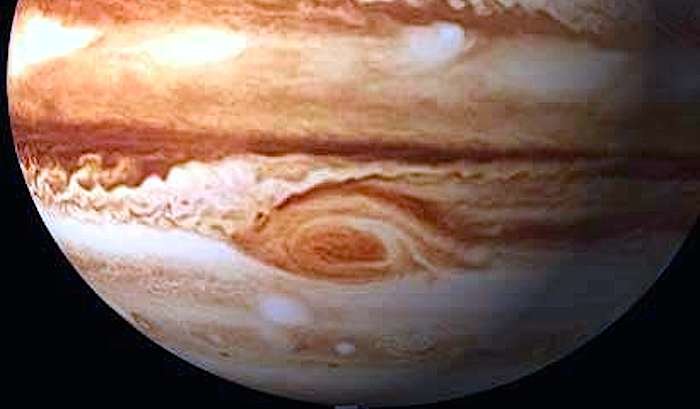
© www.davidreneke.com
The
atmosphere above the gas giant's famous storm is hundreds of degrees hotter than anywhere else on the planet and scientists are on the case. Temperatures 500 miles above Jupiter's famed Great Red Spot are far warmer than anywhere else on the planet, raising
suspicions that the massive storm is the mysterious energy source that is heating the giant planet's upper atmosphere.Scientists have yet to understand why
Jupiter's upper atmosphere is about the same temperature as Earth's though the planet is five times farther away from the sun. A new study points to the Great Red Spot, a gargantuan storm that astronomers have been watching with telescopes on Earth for more than 300 years, as the heat source.
Scientists used NASA's NASA Infrared Telescope Facility at the Mauna Kea Observatory in Hawaii to study Jupiter for nine hours in December 2012. They found a
spike in temperatures over the Great Red Spot, a storm big enough to swallow three Earths that is the largest storm in the solar system.
That led lead author James O'Donoghue with Boston University and colleagues to suggest that the Great Red Spot is
producing acoustical waves that heat the upper atmosphere, a phenomenon which has been observed over the Andes Mountains on Earth. Acoustic waves have previously been suggested as a source of energy from below, but this direct observation of a localized source of heating provides
strong evidence for coupling between the lower and upper atmosphere," a summary of the research, which appears in this week's
Nature, shows.
The discovery is the
first evidence linking the Great Red Spot, which is located in Jupiter's lower atmosphere, with a temperature spike in the upper atmosphere. "The extremely high temperatures observed above the storm appear to be
the 'smoking gun' of this energy transfer, indicating that planet-wide heating is a plausible explanation" for Jupiter's upper atmospheric temperatures," O'Donoghue said in a statement.
Exactly how the energy transfer works is unknown. "My difficulty with their particular theory is that the
waves have to break up only in a specific part of the atmosphere while being in 'stealth mode' in the lower atmosphere , where we see no thermal evidence for them at all over many years of examining images and spectroscopy of the planet," Glenn Orton, a planetary scientist at NASA's Jet Propulsion Laboratory in Pasadena, Calif., wrote in an email to DNews.
More information should be coming from
NASA's Juno spacecraft, which arrived at Jupiter on July 4 for a 20-month study. "Juno will be
exploring the depth of the atmosphere where the Great Red Spot originates from, rather than the heights. So we can place bounds on how much acoustical energy might be generated by the GRS at depth that might be channeled to the altitudes above it," Orton said.
"We're not going to see much of the Great Red Spot until late in the mission," he added.
But on only the second closest approach to Jupiter, Juno is expected to be able to detect the atmosphere northwest of the spot, a turbulent region that has
evidence of lightning and upwelled pristine particles of condensed icy ammonia crystals, Orton said. Those crystals act like water ice crystals in Earth's upper atmosphere to become cirrus clouds, he added.

Think I'll wait for the thunderbolts explanation.